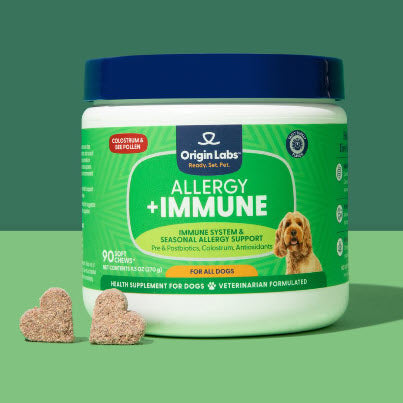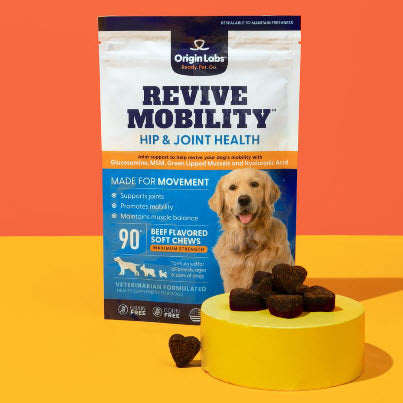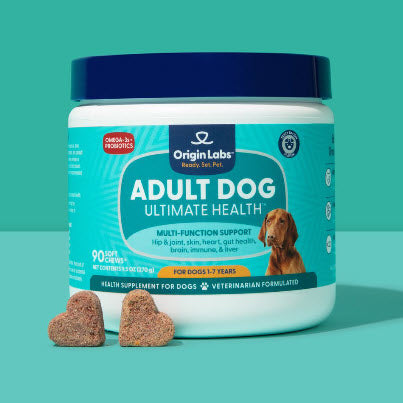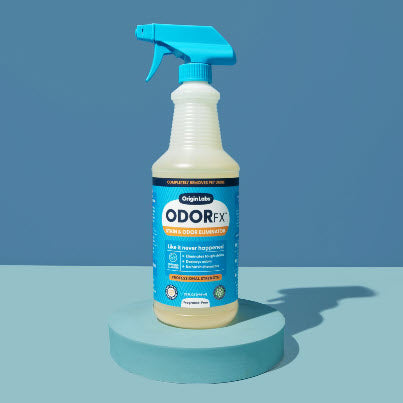Introduction
Many pet owners are curious about whether it's safe for dogs to eat pesto. Pesto is a popular sauce known for its delicious taste and ability to enhance various dishes like pasta, sandwiches, and salads. However, when it comes to sharing this flavorful treat with our furry friends, we need to be careful.
Pesto usually contains ingredients that are fine for humans but can be harmful to dogs. Garlic and certain nuts, which are commonly used in pesto recipes, have the potential to cause serious health problems in dogs. This leads us to an important question: what kinds of foods can dogs safely eat?
Knowing which foods are suitable for dogs is essential for keeping them healthy. Giving pets the wrong types of food can result in various health issues, ranging from minor stomach discomfort to severe poisoning. As responsible pet owners, we must educate ourselves about the safety of different foods for dogs so that we can make the best choices for their well-being.
In this guide, we will discuss the potential risks of feeding pesto to dogs and offer alternative options that are both safe and nutritious. Our goal is to provide dog owners with the knowledge they need to make informed decisions regarding their pets' diets.
The Risks of Feeding Pesto to Your Dog
Pesto composition raises several red flags when considering it for canines. Here's a breakdown of key ingredients found in traditional pesto and their potential health risks for dogs:
1. Garlic: A Hidden Danger
Garlic, a member of the Allium family, is a staple in many kitchens. In pesto, garlic provides a pungent kick, enhancing the overall flavor profile. Yet, garlic is highly toxic to dogs.
- Toxic Compounds: Garlic contains thiosulfates, which can damage red blood cells in dogs, leading to hemolytic anemia.
- Symptoms: Consumption can cause vomiting, diarrhea, lethargy, rapid breathing, and even collapse.
- Risk Level: Even small amounts can be harmful over time due to cumulative effects.
2. Basil: Surprisingly Problematic
Basil is another core ingredient in pesto that seems innocuous but can pose issues for dogs.
- Digestive Upset: While not as toxic as garlic, basil can still lead to gastrointestinal upset such as nausea and vomiting if ingested in large quantities.
- Essential Oils: Basil contains essential oils that may be too strong for a dog's digestive system.
3. Parmesan Cheese: High Sodium Content
Parmesan cheese adds richness and umami to pesto but also comes with drawbacks for canine health.
- High Sodium Levels: Excessive salt intake can lead to sodium ion poisoning in dogs.
- Symptoms: Symptoms of sodium ion poisoning include vomiting, diarrhea, tremors, elevated body temperature, and seizures.
- Lactose Issues: Many dogs are lactose intolerant; consuming cheese can result in digestive discomfort.
4. Pine Nuts: Fatty Acids and Allergens
Pine nuts are used in pesto for their unique texture and flavor but can have adverse effects on dogs.
- High Fat Content: The high-fat content can lead to pancreatitis—a painful condition caused by inflammation of the pancreas.
- Allergies: Dogs might be allergic or sensitive to nuts, resulting in symptoms like itching or swelling.
5. Olive Oil: While Beneficial in Moderation
Olive oil is often considered healthy due to its monounsaturated fats but should be approached cautiously.
- Fatty Content: Excessive fat intake can contribute to obesity and pancreatitis.
- Digestive Issues: Overconsumption may result in diarrhea or vomiting.
6. Salt: A Silent Threat
Salt enhances the flavor of pesto but poses significant risks for dogs.
Higher Toxicity Levels: Dogs require significantly less salt compared to humans.
Health Risks:
- Dehydration
- Electrolyte imbalance
- Hypertension
- Kidney damage
To ensure the well-being of your furry friend:
- Always read ingredient labels carefully before sharing human food with pets.
- Maintain awareness of commonly harmful ingredients such as those found in pesto.
Understanding these risks helps pet owners make informed decisions about their dog's diet, avoiding potentially life-threatening situations associated with seemingly harmless foods like pesto.
Safe Alternatives: Homemade Dog-Friendly Pesto Recipes
Promoting responsible pet ownership involves ensuring the foods we offer to our dogs are both nutritious and safe. Traditional pesto, with ingredients like garlic and pine nuts, is unsafe for dogs. Thankfully, there are several dog-friendly pesto recipes that you can easily prepare at home.
Ingredients to Use
Creating a dog-friendly pesto involves using ingredients that are safe and healthy for canine consumption. Consider incorporating:
- Leafy Greens: Spinach, kale, and other leafy greens provide essential vitamins and minerals.
- Herbs: Parsley and oregano are safe alternatives to basil.
- Proteins: Adding cooked chicken or salmon boosts the nutritional value.
- Oils: Olive oil or flaxseed oil in moderation can be beneficial.
Recipe Options
Spinach-Parsley Pesto
Ingredients:
- 1 cup fresh spinach
- 1/2 cup fresh parsley
- 1/4 cup grated carrot
- 2 tablespoons olive oil
- 1/4 cup cooked chicken (optional)
Directions:
- Combine spinach, parsley, and carrot in a blender.
- Add olive oil gradually while blending until smooth.
- Mix in cooked chicken for an extra protein boost.
Kale-Oregano Pesto
Ingredients:
- 1 cup fresh kale
- 1/2 cup fresh oregano
- 1/4 cup grated zucchini
- 2 tablespoons flaxseed oil
- 1/4 cup cooked salmon (optional)
Directions:
- Blend kale, oregano, and zucchini until finely chopped.
- Slowly add flaxseed oil while blending to achieve a smooth consistency.
- Incorporate cooked salmon for additional nutrition.
Mixed Green Pesto
Ingredients:
- 1/2 cup spinach
- 1/2 cup kale
- 1/4 cup fresh parsley
- 2 tablespoons olive oil
- 1 tablespoon unsweetened applesauce
Directions:
- Blend all greens together until they are finely chopped.
- Add olive oil gradually while blending until smooth.
- Stir in applesauce for a slight sweetness that dogs may enjoy.
Creative Additions
Encouraging creativity can make these recipes even more nutritious:
- Nuts & Seeds: Small amounts of sunflower seeds or pumpkin seeds can be added for texture (ensure they are unsalted).
- Vegetables: Grated carrots or zucchini can increase fiber content.
- Fruits: A bit of unsweetened applesauce or blueberries can add flavor without adding unhealthy sugars.
These homemade dog-friendly pesto recipes not only avoid harmful ingredients but also offer various health benefits through nutritious components tailored for canine well-being.
Maintaining a Healthy Diet for Your Dog
Feeding your dog a balanced diet is crucial for their overall health and well-being. Understanding canine nutrition and what constitutes healthy foods for dogs will help you make informed choices to ensure your furry friend lives a long, happy life.
Essential Components of a Dog's Diet
A dog's diet should be composed of several key components to maintain optimal health:
1. Proteins
Proteins are essential for muscle development and repair in dogs. They play a crucial role in various bodily functions, including immune system support, hormone production, and tissue regeneration. Ensuring your dog receives high-quality protein sources is vital for their overall health and well-being.
Some common sources of protein for dogs include:
- Chicken: A lean meat that is easily digestible and rich in essential amino acids.
- Beef: Provides a robust source of protein along with iron and zinc, which are important for energy and immune function.
- Salmon: Not only a great protein source but also high in omega-3 fatty acids, which support skin health.
- Eggs: An excellent source of complete protein, as they contain all the essential amino acids. Eggs also provide vitamins like B12 and riboflavin.
In addition to these primary sources, you might consider incorporating other proteins into your dog's diet:
- Turkey: Similar to chicken but with slightly different nutrients, it offers variety in your dog's meals.
- Lamb: A good alternative for dogs with sensitivities to more common proteins like chicken or beef.
- Duck: Rich in iron and B-vitamins, providing an exotic protein option.
When selecting protein sources, it's important to consider the quality and how it fits into your dog’s overall dietary needs. Opt for fresh, unprocessed options whenever possible to ensure maximum nutritional benefits.
2. Carbohydrates
Carbohydrates provide energy for dogs and are important for overall health. Here are some suitable options for incorporating carbohydrates into your dog's diet:
- Brown rice: A highly digestible grain that offers fiber, vitamins, and minerals.
- Sweet potatoes: Rich in dietary fiber, vitamins A and C, and antioxidants, sweet potatoes can support digestive health.
- Oats: High in soluble fiber and great for dogs with wheat allergies, oats also provide essential minerals like iron and zinc.
3. Fats
Fats are necessary for healthy skin and coat, as well as brain function in dogs. Good sources of fats include:
- Fish oil: Loaded with omega-3 fatty acids, fish oil supports joint health and reduces inflammation.
- Flaxseed oil: Another excellent source of omega-3 fatty acids, flaxseed oil can improve coat condition and aid in digestion.
- Chicken fat: Provides essential fatty acids and is a highly palatable option that enhances the flavor of dog food.
4. Vitamins and Minerals
Vitamins and minerals are essential for various bodily functions in dogs. Some sources include:
- Leafy greens like spinach or kale: Packed with vitamins A, C, and K, as well as iron and calcium, these greens can boost immune function.
- Carrots: High in beta-carotene (a precursor to vitamin A), carrots support vision health and offer antioxidant benefits.
- Blueberries: Rich in vitamins C and K, as well as antioxidants, blueberries can enhance your dog's immune system.
- Incorporating a variety of these nutrients into your dog's diet ensures they receive all the essential components needed for optimal health.
Tailoring the Diet to Your Dog's Needs
Different dogs have different dietary requirements based on factors such as age, breed, size, and health condition. Here are some considerations:
Puppies
Puppies require a higher protein intake to support their growth and development. Look for puppy-specific formulas that are rich in essential nutrients.
Adult Dogs
For adult dogs, a balanced diet with moderate protein and fat content is ideal. Adjust portion sizes based on activity level to prevent obesity.
Senior Dogs
Older dogs may need fewer calories but more fiber to aid digestion. Consider foods with joint-supporting nutrients like glucosamine.
Common Dietary Mistakes to Avoid
Ensuring canine nutrition involves avoiding certain pitfalls that could harm your dog's health:
- Overfeeding: Obesity is a common issue in pets. Stick to recommended portion sizes.
- Underfeeding: Malnutrition can lead to various health problems.
- Inconsistent Feeding Schedules: Aim for regular meal times to promote digestive health.
- Feeding Human Foods: Many human foods are unsafe for dogs (e.g., chocolate, grapes).
Healthy Snacks and Treats
Treats should only make up about 10% of your dog's daily caloric intake. Opt for nutritious options such as:
- Baby carrots
- Apple slices (without seeds)
- Green beans
- Plain cooked chicken
Hydration Is Key
Water is often an overlooked component of canine nutrition but is vital for every bodily function. Ensure your dog has access to fresh water at all times.
Commercial Dog Food vs. Homemade Meals
Both commercial dog food and homemade meals can provide complete nutrition if chosen or prepared
Consulting Your Veterinarian: The Best Source of Advice
Ensuring your dog’s diet is both healthy and safe involves more than just avoiding harmful foods. Consulting a veterinarian provides personalized advice tailored to your dog's unique dietary needs. A vet can consider:
- Age and Breed: Different breeds and life stages have specific nutritional requirements.
- Health Conditions: Dogs with conditions like diabetes, allergies, or kidney issues need specialized diets.
- Activity Level: Active dogs may require more calories and specific nutrients compared to less active ones.
A veterinarian's guidance ensures any dietary adjustments are beneficial rather than harmful. They can recommend the right types of food, portion sizes, and feeding schedules tailored to your pet’s individual needs. This professional insight is crucial for preventing nutritional deficiencies and managing health conditions effectively.
Key Benefits of Veterinary Guidance
- Allergy Management: Identifying and avoiding allergens that could cause adverse reactions.
- Nutritional Balance: Ensuring all essential nutrients are included in appropriate amounts.
- Preventive Care: Tailoring diets to prevent potential health issues based on breed or genetic predispositions.
Veterinary guidance for dog owners is indispensable for maintaining a balanced diet and optimal health for your furry friend. Always prioritize professional advice to make informed decisions about your dog's nutrition.
Conclusion
Pesto, a delightful condiment for humans, should be strictly avoided in dogs' diets. The harmful ingredients like garlic and certain types of basil can pose serious health risks to our furry friends.
Key Takeaways:
- Harmful Ingredients: Garlic and some varieties of basil found in pesto are toxic to dogs.
- Health Risks: Consumption can lead to serious health issues ranging from stomach upset to more severe conditions.
Prioritizing the health of our canine companions means making informed choices about what foods they consume. Always seek professional advice from veterinarians when introducing any new food into your dog's diet.
Remember, our pets rely on us to make the best decisions for their well-being. By staying informed and cautious, we ensure a healthier and happier life for them.
For those wondering, "can dogs eat pesto sauce?"—the answer is clear: it's best left off their menu.
FAQs (Frequently Asked Questions)
Can dogs eat pesto?
No, dogs should not eat pesto due to its harmful ingredients like garlic and basil, which can pose health risks to them.
What are the health risks for dogs from eating pesto?
The health risks for dogs from eating pesto include potential toxicity from ingredients such as garlic and basil, as well as digestive issues from other components like parmesan, pine nuts, and salt.
What are some safe alternatives to traditional pesto for dogs?
Safe alternatives to traditional pesto for dogs include homemade dog-friendly pesto recipes using ingredients like leafy greens (e.g., spinach or kale), pet-safe herbs (e.g., parsley or oregano), and protein sources such as cooked chicken or salmon.
What are some healthy foods for dogs?
Healthy foods for dogs include a balanced diet of high-quality commercial pet food, lean proteins, vegetables, fruits, and whole grains. It's important to ensure that any human foods offered to dogs are safe and beneficial for their overall well-being.
Why is it important to consult a veterinarian regarding your dog's diet?
It is important to consult a veterinarian regarding your dog's diet because they can provide personalized advice tailored to the specific dietary needs of each dog, taking into account any existing health conditions or allergies they may have.








